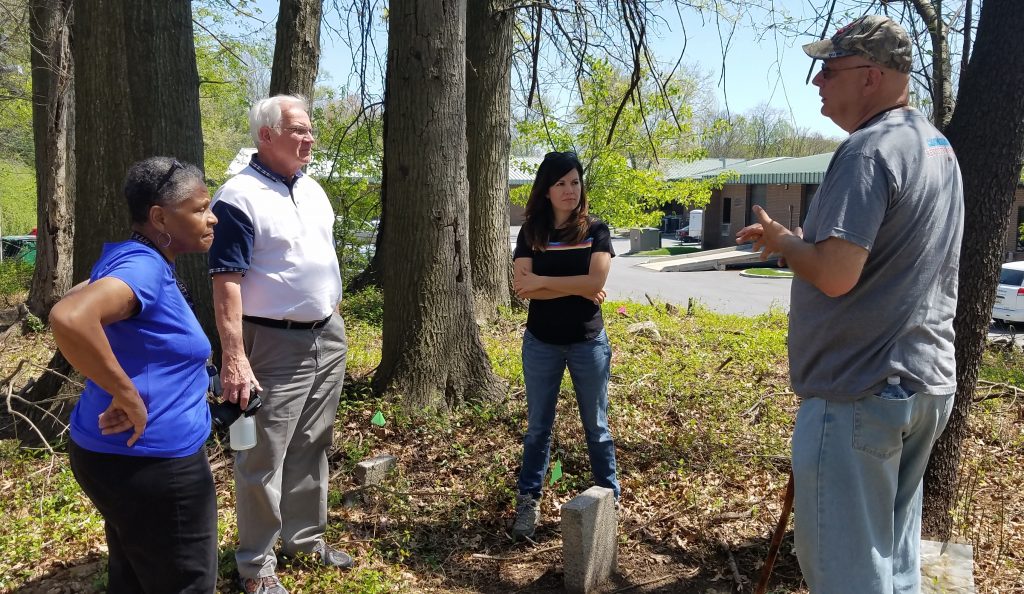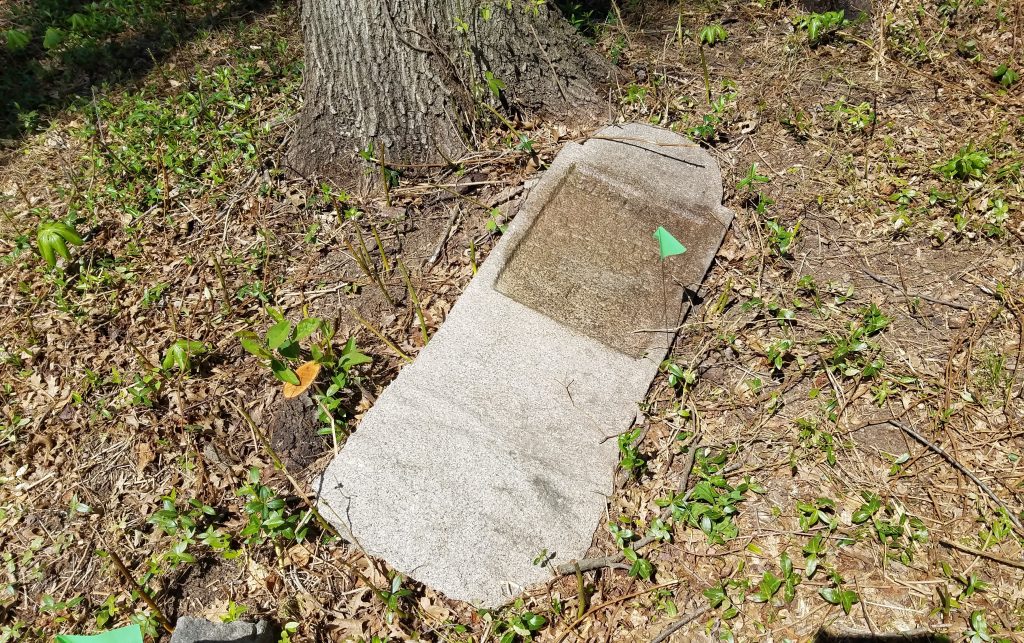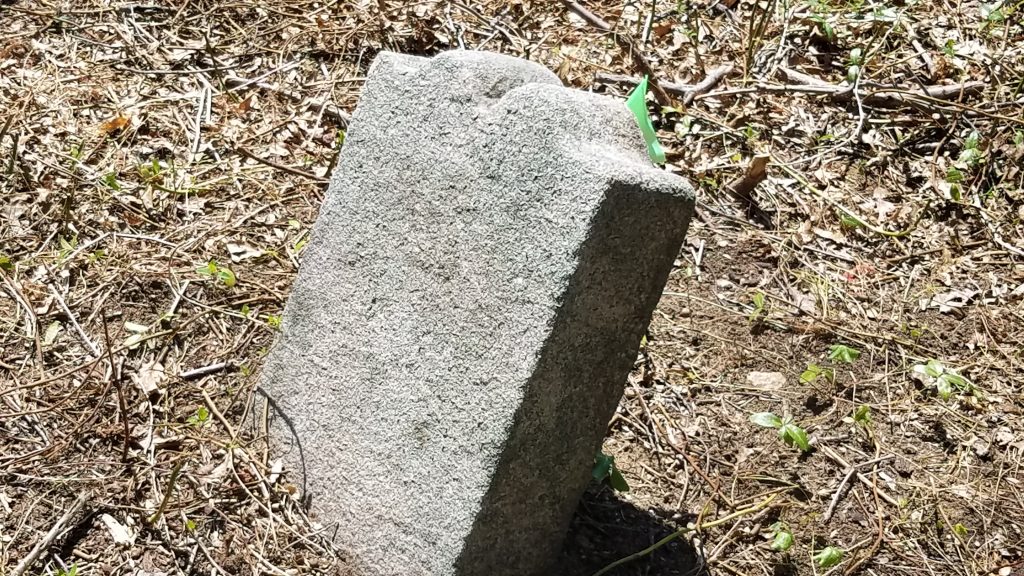
In the Columbia, Maryland Village of Kings Contrivance, there is a little-known cemetery behind an office park along Guilford Road. In the background you hear the roar of the automobiles from Route 32 where it intersects Broken Land Parkway. The lot where this resting place is located is otherwise peaceful and undisturbed. There is shade, making it more pleasant than many of your well-maintained, commercial establishments.
Except for a few, not many residents in the area know that this cemetery exists. Most of the headstones are not marked, and most of them are not carved. They are fieldstones, likely from the old Guilford Quarry, according to Julie Schablitsky, Chief Archaeologist at the State Highway Administration.
Schablitsky is working with a small group of history-minded Howard County residents to learn more about this small cemetery, which dates back to the early 1800’s.
According to Bessie Bordenave, a local historian, the land is located in what was Guilford, Maryland, before Columbia was founded. Bordenave is an African American, who has a keen interest in the black history of Guilford and the county’s first black high school, the Harriett Tubman School.
Bordenave, a resident of Guilford teamed with Wayne Davis, an environmental scientist with the U.S. Environmental Protection Agency, and a resident of Kings Contrivance, to learn more about the history of the site. They want to work towards preservation.
Schablitsky, Bordenave, and Davis, along with Fred Dorsey, another county resident with deep roots here, are all working on a theory that slaves are buried at the site, with a few notable exceptions.
One of the more prominent headstones on the property is located at the grave of Eliza Marlow. According to the inscription, which is still readable, she was born June 28, 1802 and died in 1838. There is enough information on Marlow to know that she was white. Her son, George W. Marlow, according to Davis’ research, owned land nearby the cemetery and the Guilford Quarry in 1871.
Davis found that Marlow was born Eliza Isaak to John Isaak and Elizabeth Moore, a prominent Maryland family. She married John Carroll in 1821 and after his death she married Benjamin Marlow in 1832. She had two children – George W (1833) and Sarah Ellen (1835) before she died in 1838.
The cemetery was discovered by chance recently, when Davis and his neighbor Jerry Uekermann were researching the history of the mill and quarries in Guilford. According to Davis, “Uekermann noticed the cemetery on old development plats. We decided to walk over and explore them and that led to some interesting discoveries.”
Davis estimates 75 graves at the site, while Schablitsky says, “there could be up to 100 burials at that location.” She said, “We don’t know who these people are – possibly former slaves.” At SHA there is an entire division responsible for the preservation of historical artifacts, Native American ancestral lands, and cemeteries related to an SHA right-of-way. Schablitsky is in charge of archaeology, which is why she became involved in this site.
Davis reached out to SHA and Schablitsky arranged for crews to tend to the cemetery while research continued.
According to Schablitsky, “Sometimes you have slaves buried next to [slave] owners.” The local team conducting research is looking for answers. Davis, who is also working to preserve the Patuxent Branch Trail near Old Guilford Road, is spearheading the effort to preserve what he calls the Guilford Quarry Cemetery. He is relying on the expertise and efforts of Bordenave, Uekermann, Schablitsky, and Dorsey in this endeavor.
The team has learned quite a bit in researching the cemetery and those buried there, but according to Davis, there is more to discover.
He said, “We need to determine the origin of the cemetery, why this spot was chosen, and who is buried there. Why is Eliza Marlow buried there and why is her gravestone more ornate than the others? Were any of the bodies disturbed during the construction of Route 32 or the nearby development? What nearby property did Eliza Marlow’s son own more than 30 years after her death? We end up with more questions with every answer we find.“
The cemetery land is presently owned by the Howard Research and Development Corporation, according to Davis.


